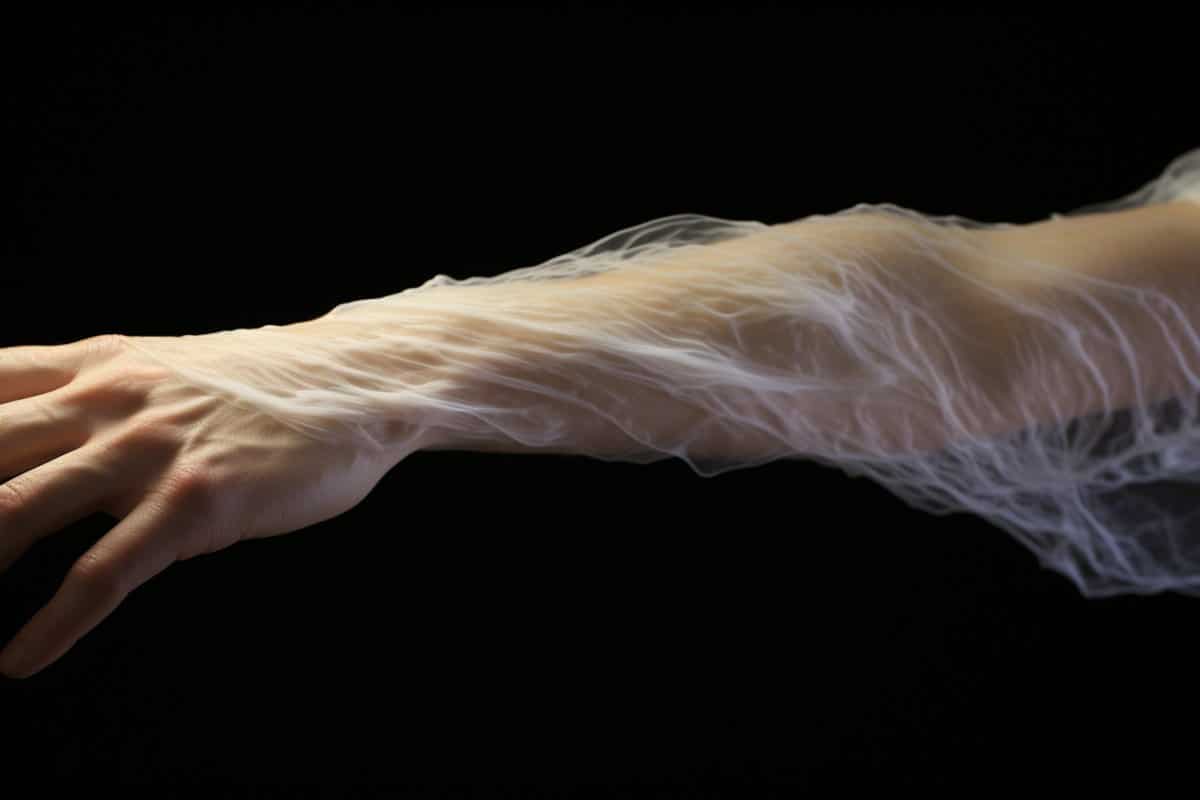Summary: A new study uncovered a previously unknown mechanism in hair follicles that allows us to detect touch.
Previously, sensation was attributed only to nerve endings in the skin, but this study reveals that cells within hair follicles can also sense touch. These cells release neurotransmitters, histamine and serotonin, in response to touch.
This discovery might lead to a deeper understanding of inflammatory skin conditions like eczema.
Key Facts:
- Hair follicle cells, not just nerve endings in the skin, can detect touch.
- When stimulated by touch, hair follicle cells release the neurotransmitters histamine and serotonin.
- This new understanding might reshape how we view the role of histamine in inflammatory skin diseases such as eczema.
Source: Imperial College London
Imperial researchers have discovered a hidden mechanism within hair follicles that allow us to feel touch.
Previously, touch was thought to be detected only by nerve endings present within the skin and surrounding hair follicles. This new research from Imperial College London has found that that cells within hair follicles – the structures that surround the hair fibre – are also able to detect the sensation in cell cultures.

The researchers also found that these hair follicle cells release the neurotransmitters histamine and serotonin in response to touch – findings that might help us in future to understand histamine’s role in inflammatory skin diseases like eczema.
Lead author of the paper Dr Claire Higgins, from Imperial’s Department of Bioengineering, said: “This is a surprising finding as we don’t yet know why hair follicle cells have this role in processing light touch. Since the follicle contains many sensory nerve endings, we now want to determine if the hair follicle is activating specific types of sensory nerves for an unknown but unique mechanism.”
A touchy subject
We feel touch using several mechanisms: sensory nerve endings in the skin detect touch and send signals to the brain; richly innervated hair follicles detect the movement of hair fibres; and sensory nerves known as C-LTMRs, that are only found in hairy skin, process emotional, or ‘feel-good’ touch.
Now, researchers may have uncovered a new process in hair follicles. To carry out the study, the researchers analysed single cell RNA sequencing data of human skin and hair follicles and found that hair follicle cells contained a higher percentage of touch-sensitive receptors than equivalent cells in the skin.
They established co-cultures of human hair follicle cells and sensory nerves, then mechanically stimulated the hair follicle cells, finding that this led to activation of the adjacent sensory nerves.
They then decided to investigate how the hair follicle cells signalled to the sensory nerves. They adapted a technique known as fast scan cyclic voltammetry to analyse cells in culture and found that the hair follicle cells were releasing the neurotransmitters serotonin and histamine in response to touch.
When they blocked the receptor for these neurotransmitters on the sensory neurons, the neurons no longer responded to the hair follicle cell stimulation. Similarly, when they blocked synaptic vesicle production by hair follicle cells, they were no longer able to signal to the sensory nerves.
They therefore concluded that in response to touch, hair follicle cells release that activate nearby sensory neurons.
The researchers also conducted the same experiments with cells from the skin instead of the hair follicle. The cells responded to light touch by releasing histamine, but they didn’t release serotonin.
Dr Higgins said: “This is interesting as histamine in the skin contributes to inflammatory skin conditions such as eczema, and it has always been presumed that immune cells release all the histamine. Our work uncovers a new role for skin cells in the release of histamine, with potential applications for eczema research.”
The researchers note that the research was performed in cell cultures, and will need to be replicated in living organisms to confirm the findings. The researchers also want to determine if the hair follicle is activating specific types of sensory nerves.
Since C-LTMRs are only present within hairy skin, they are interested to see if the hair follicle has a unique mechanism to signal to these nerves that we have yet to uncover.
Funding: This work was funded by Engineering and Physical Research Council (EPSRC, part of UKRI), Proctor & Gamble, Wellcome Trust, and Biotechnology and Biological Sciences Research Council (BBSRC, part of UKRI).
About this tactile perception research news
Author: Caroline Brogan
Source: Imperial College London
Contact: Caroline Brogan – Imperial College London
Image: The image is credited to Neuroscience News
Original Research: Open access.
“Mechanical stimulation of human hair follicle outer root sheath cultures activates adjacent sensory neurons” by Claire Higgins et al. Science Advances
Abstract
Mechanical stimulation of human hair follicle outer root sheath cultures activates adjacent sensory neurons
Mechanical stimuli, such as stroking or pressing on the skin, activate mechanoreceptors transmitting information to the sensory nervous system and brain.
It is well accepted that deflection of the hair fiber that occurs with a light breeze or touch directly activates the sensory neurons surrounding the hair follicle, facilitating transmission of mechanical information.
Here, we hypothesized that hair follicle outer root sheath cells act as transducers of mechanical stimuli to sensory neurons surrounding the hair follicle.
Using electrochemical analysis on human hair follicle preparations in vitro, we were able to show that outer root sheath cells release ATP and the neurotransmitters serotonin and histamine in response to mechanical stimulation.
Using calcium imaging combined with pharmacology in a coculture of outer root sheath cells with sensory neurons, we found that the release of these three molecules from hair follicle cells leads to activation of sensory neurons.






